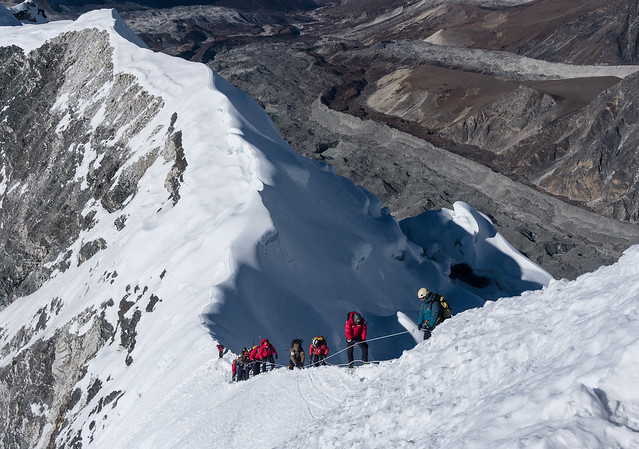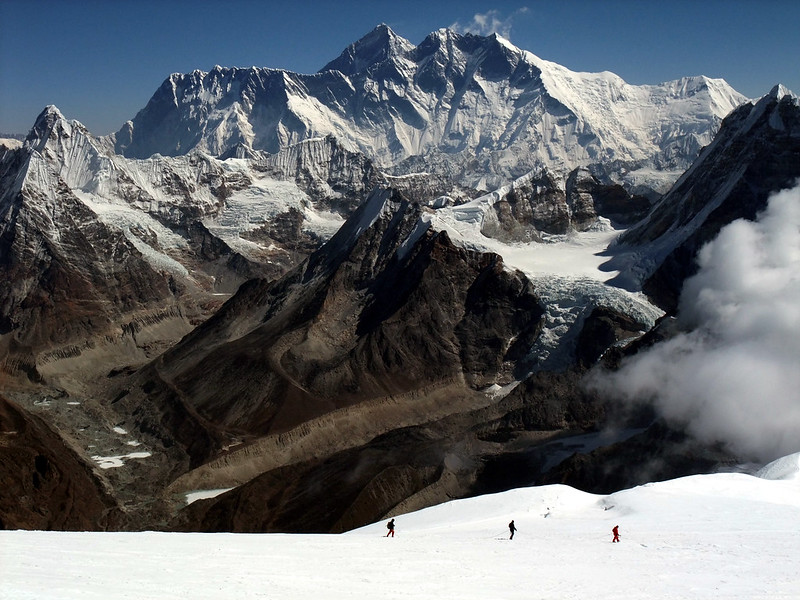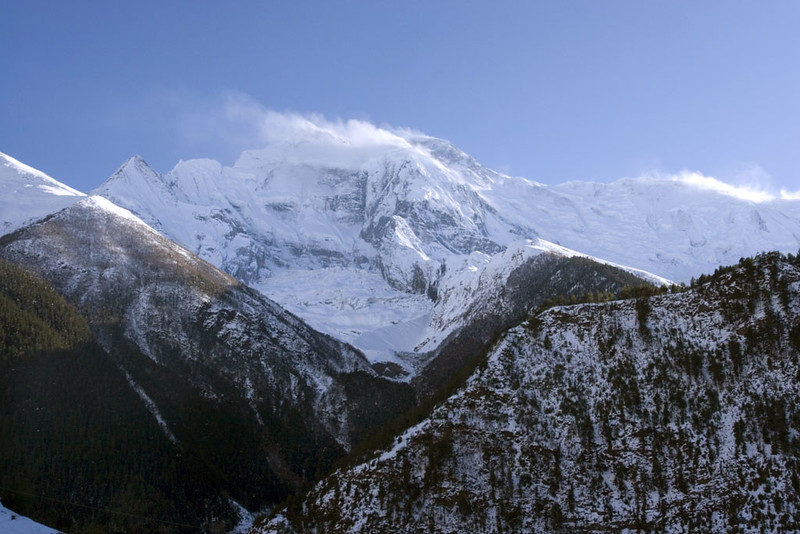Peak Climbing in Nepal provides a challenge of strength, endurance, and sacrifice. Mountains have long been thought to be home to gods, monsters, and other supernatural entities. Nepal, affectionately known as the “Home of the Gods,” is home to eight of the world’s ten highest peaks. While climbing the gorgeous Himalayas may be a thrilling quest of great adventure, for many, it is a once-in-a-lifetime fantasy.
Climbing peaks, classified as “trekking peaks” by the Nepal Mountaineering Association, are mainly found between the altitudes of 5,000 and 7,000 meters. These peaks, as the name indicates, can be tackled as part of a regular hiking tour leading up to the intended summit. Nepal also has some of the world’s highest hiking peaks, making peak climbing in Nepal a once-in-a-lifetime adventure.
These 7 Short Peak Climbing trips in Nepal will guide beginners through their first ascent of the Himalayan peaks, which are among the 10 finest climbing peaks in Nepal.

Island Peak (6,189m/20,305ft)
Island Mountain, the most popular short-peak climbing in Nepal, provides an amazing climbing experience for all beginner climbers and trekkers. It is frequently regarded as the first step for every climber embarking on their climbing adventure. Island Peak is a beautiful and enjoyable climb that serves as an entrance to the Khumbu region’s massive Himalayas.
Mera Peak (6,476m/21,247ft) Most Famous Short Peak Climbing in Nepal

Photo credit: markhorrell on Visualhunt.com
Mera Peak is also one of the top peak climbers in Nepal, with a height of 6,476 meters. Its stunning summit picture includes Kangchenjunga, Makalu, Lhotse, Everest, and Cho Oyu, five of the world’s 8000ers. Mera Peak is never especially challenging, despite its menacing neighbors, but there is the altitude to worry about. This excursion is unquestionably a worthwhile and thrilling challenge.
Pisang Peak (6,091m / 19,978ft)

Pisang Peak, one of the smaller hiking peaks in the Annapurna area, is one of the most popular climbers in Nepal. It is well-known among beginning climbers for its simple ascent, short span, and stunning Himalayan views. Pisang Peak sits above the lovely Pisang town, where you can see countless yak pastures on a uniform slope of ice and snow that stretches out around you.
Tent Peak (5,663m / 18,575ft)
The Tharpu Chuli, or Tent Peak, is an amateur’s dream, located just south of the Annapurna Base Camp. The top provides breathtaking panoramic views of the Annapurna region’s spectacular snow-capped mountains. This peak climbing in Nepal is great for people who want to progress from trekking to amateur mountaineering. Aside from lifelong memories, the trip includes a journey to the beautiful Annapurna Base Camp, as well as a couple of days of peak climbing, making it a popular trekking peak climbing experience.
Lobuche Peak (6,119m/20,070ft)
Lobuche Peak is located in the Khumbu Region, close to Lobuche town. This summit is not distant from Mt. Everest, yet it is only a few kilometers away from the world’s tallest peak. The Lobuche East Peak (6119m) and the Lobuche West Peak (6119m) are the two peaks of Lobuche Peak (6145m). Both are great peak climbing in Nepal for a novice, as they are located in the Everest foothills.
Yala Peak (5,700m/18,700ft)
The Yala Peak, located 19 miles north of Kathmandu, is a popular hikers’ climbing peak in the Langtang area. The Yala peak trek is a culturally fascinating combination of the famous Langtang trip. The Langtang region is charming and attractive, making it an excellent choice for all trekkers looking for short-peak climbing in Nepal. With stunning grandeur and a Himalayan vista around you, both the journey and the ascent remain lovely and culturally rich.
Chulu West Peak (6,419m / 21,055ft)
Aside from lifelong memories, the trip includes a journey to the beautiful Annapurna Base Camp, as well as a couple of days of peak climbing, making it a popular trekking peak climbing in Nepal experience. The Chulu West Peak, part of the Manang Himal Range, is another treasure of the Annapurna area. Its summit can be observed from the Annapurna Thorung La pass path. To reach the summit, climbers must traverse the Northwest Ridge, which necessitates considerable technical climbing skills. The breathtaking vistas of the broader Annapurna range, as well as the satisfaction of completing a challenging task, await you as a reward!
